I decided to try and use Jigspace. I put in some random things: a methane molecule; (my son had gas tonight); A Bolivian Flag (a place I really wantI decided to try and use Jigspace. I put in some random things: a methane molecule; (my son had gas tonight); A Bolivian Flag (a place I really want to visit.); A Liechtenstein (a place I have never heard of) and Surinam (where a cousin of mine lives) as well as the moon and venus. At first I found it kind of repetitive as I could only spin, move or change the colour of objects, but as I played around, I really liked different perspectives and how different everything was looking from above or from the angle of one of the objects. I also liked some of the objects, mainly the plants, coral, planets, food and furniture, and with out movements, you could use this to build mini sets and look from different angles. In my work, will I use this? I could use it to design instructions that require mapping a physical space. Maybe?
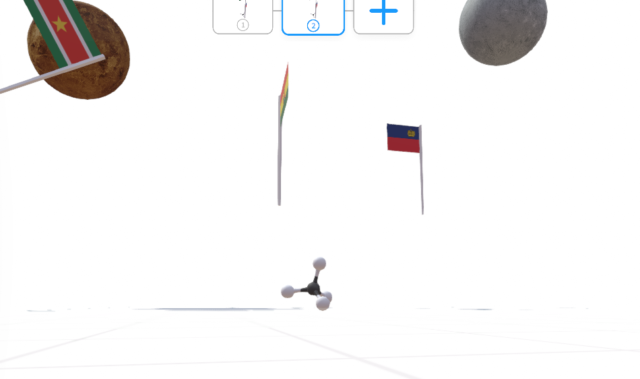
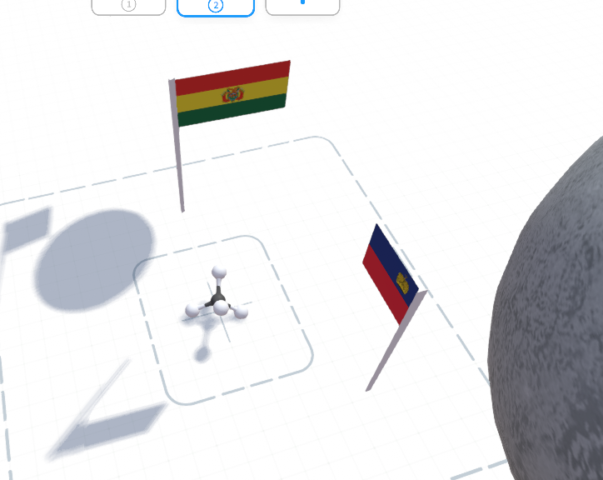
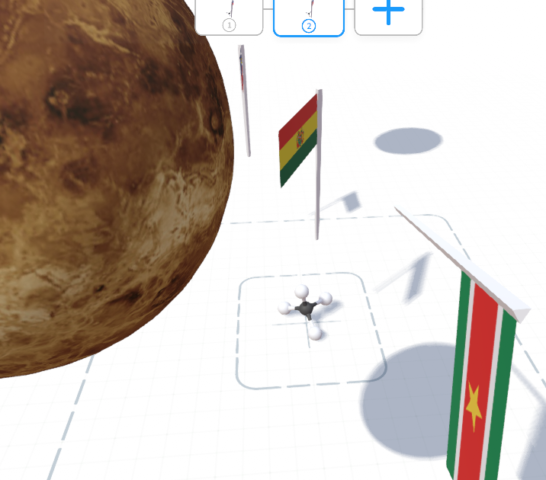
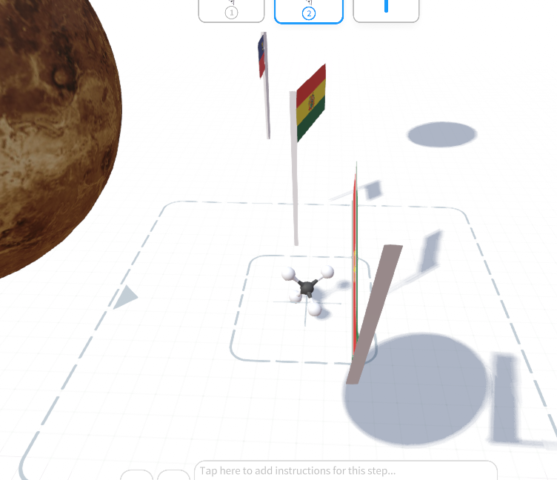
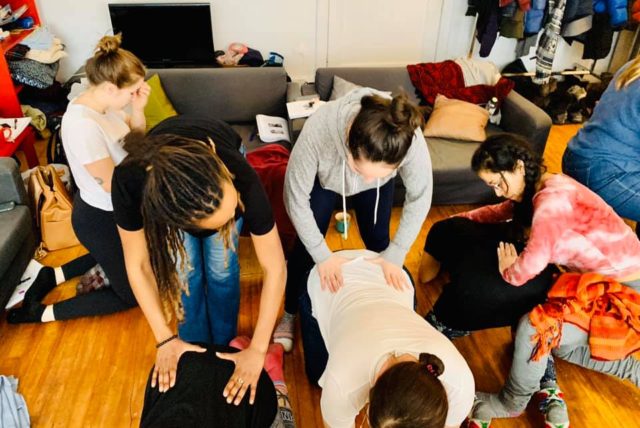
Current Evaluation
I will be looking at the re-design of the evaluation techniques for a doula training. I chose this because its context is particular. Doulas are considered birth support workers and can be found in hospital, home and birthing centre births. They are not to be confused with midwives, as they do not have clinical power, yet share information, advocate, offer emotional support and physical comfort. They are not regulated. The majority of doulas feel this is positive as they can’t be kicked-out of a birth. They can be there as a simple support person. Many doulas also say they work within the system to support birth-givers, but are not of the system, as the medical model does not usually represent the style of care they are advocating and so do not want to end up being regulated by the medical establishment. Because doulaing is not regulated, all “certifications” and trainings have been developed by individuals or groups of doulas based on their experience. One can become a doula without any training. However, for those that doula, it is their profession and is a path of lifelong learning. That said, most burn-out after four years.
I am analyzing the MotherWit Doula Training’s evaluation process. It is one that isn’t graded, a learner is required to:
-Attend a four day training that follows a course pack with the instructor mainly explaining the contents, using stories to ground the material and there are exercises to practice, learn and assess as well as discussion.
-Read and do book reports on 11 specified books
-Attend three breastfeeding support group meetings
-Complete an online 20 hour accredited breastfeeding course
-Create a mission statement and elevator pitch
-Create a resource list for parents and contact at least three people and meet with one on the list to discuss doulaing and what they do with them so you can network
-Attend four births, paid or unpaid. Shadowing another doula is optional. With reports submitted about each birth.
-Have a family fill-out an evaluation of their experience with the doula in training for the instructor
-Final Report: written, video etc of 1000 words on a topic that is dear the learner’s heart
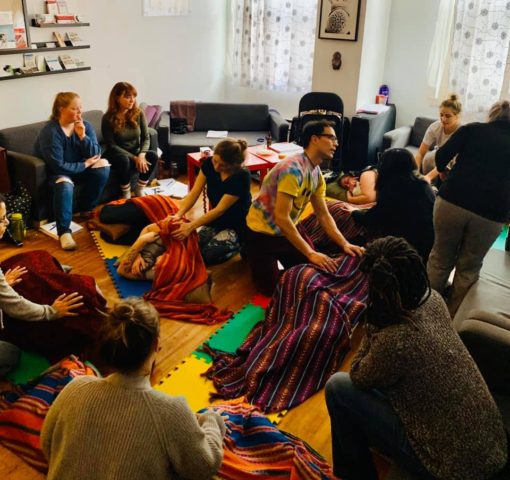
Pre-COVID, learners had one year to complete the training. Currently, they have three years to complete it in the MotherWit Program because of the falling numbers of births doulas can attend due to limitations on the number of birth support people and other pressures of the pandemic.
Please see the Specifications Table for the MotherWit Doula Training
The Purpose of the MotherWit Doula Evaluation
The goal of evaluating doulas in-training through a series of assessment activities, book reports, the creation of tools and through attending real births is to make sure that the doula has a base for working in the complex and unpredictable world of childbirth. The purpose of evaluating that doulas have done the readings, attended births and support groups, done classes and created supporting documents and been evaluated by a family is all to verify that they have the knowledge, skills and affective learning necessary to apply their learning and work in the world of childbirth. The methods of evaluation are listed above. That said, reading and assignments happen as they apply learning during birth and they do not have to wait before attending births.
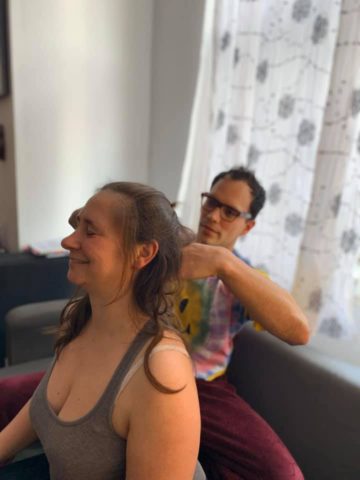
Analysis of the Doula Training Specifications
What follows is an analysis of the evaluation methods used.
I would say that there is construct validity in that there is a deep emphasis on affective learning. Psychomotor learning is a large part of the training sessions. Evaluation focuses on the ability to offer a doula model of support, advocacy, referring to resources and providing comfort as opposed to coming out with numbers or facts. The goal of using stories, readings and cultivating of a vetted relationship with the instructor is to achieve a desired affective performance.
This means though, book reports are construct over-represented and this would be a definite handicap for those whose reading and writing skills lagged behind their counterparts. Nowadays, many books can be listened to as audio books and there are provisions made for those who have difficulty writing as they can create audio recordings or make a video of themselves. This means replacing reading and writing with a possible technology barrier though. The amount of reading that is required would be amazing as a book club format for those able to participate, where doulas from different cohorts could jump in on reading and discussion of books as they happen. The trainer, Lesley Everest, also underlines that she could teach a group whose reading and writing skills are low to doula by focusing more on stories, oral transfer and psychomotor skills.
Not having part of the births for certification be shadowing experienced doulas limits the learning that will take place as there will not be a transfer from a seasoned doula and techniques modeled in a hands on way. None of this, however is graded; learners only receive feedback. If one does it all, they get the certification. Doulas are currently not regulated, so there are many doula “certification” processes and all are elected and not required. Doulas have up to three years to complete their training and read, do reports etc. It was one year, but with COVID, it has been relaxed as access to births for doulas due to support person limitations have greatly dropped. This is feasible. Not efficient in terms of time, but accessible to the learner as they can train at their own pace.
It is not considered a “fail” if a doula doesn’t certify, as they can doula regardless of certification and the training is seen as a gateway into a world that you can go as deep into as you wish. Many use the doula training as a stepping stone to nursing, midwifery and even medicine and are not that interested in certifying. Some jumpright into doulaing without being very interested in the assignments or reading. Others get very deep into the reading and theory but get stuck there and never feel ready to jump in. Certification rates are low.
What I find somewhat contstruct-irrelevant is that there is a lack of evaluation for certain units like the legal aspects and models of care where there could actually be quizzes that focus on “remembering” but then this would disadvantage some learners and takes away from a focus on offering grounded presence and moral support and moves back into an intellectual brain, when the intention is to go on an emotional and intuitive journey with the birth-giver.
I believe that there is utility for the learner but not so much for a sponsor or stakeholder. A doula can construct their practice as they see fit. There is more emphasis on authenticity and application and affective learning. In terms of fairness, I perceive it as fair in that no one is graded, yet the emphasis on reading and writing for a “being” application may screen-out learners who do not have the prerequisite time and skills in reading, writing and using a word processor. That said, you cannot fail as long as you do it.
The content validity is generally good, although there may be missing some of the nitty-gritty written-answer tests to make sure knowledge is assimilated, yet this will likely all be learned on the job. Unlike many that are trained in successfully writing exams but lack the capacity to evaluate, create or analyze after, doulas engage in higher big picture learning that helps them to see the larger context and not facts, figures and details so much.
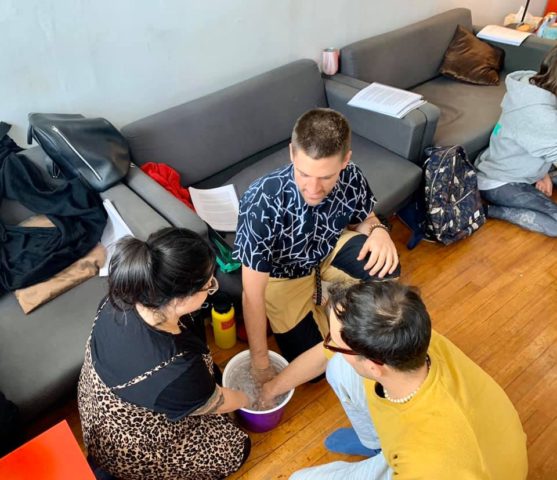
Plans for Improvement to the MotherWit Doula Training Evaluation Process
After completing the above analysis, it was clearer what needs improvement in the MotherWit evaluation process.
In terms of construct under and over representation. There are sections that are simply not evaluated and not only should they be evaluated, I believe they need a written test evaluation as they touch upon legal issues and liability. Because doulas aren’t regulated, there is not affirmative laws of what they can do, but there are things they cannot do like give medical advice, give medication, catch the baby except in the case of precipitous labour and the absence of a doctor or midwife. There is very little focus on the legal aspect or making sure that this has been well assimilated.
Book reports, although ideal for certain learners, for others they are not and there could be some other ways of evaluating like forums that comment on a video where this may be more accessible to some that may have issues reading and writing or using a word processor.
I included becoming part of the MotherWit community, although it isn’t evaluated, it is essential for the doula to survive and drum up camaraderie, support, business and get well-needed advice from seasoned doulas as well as express themselves on very difficult situations such as witnessing traumatic events. Participation on the forum and in the monthly doula nights could also be counted as part of training as it gives those whom are less inclined to read a chance t learn through interacting and networking. It is also a great way to obtain knowledge from seasoned doulas.
Shadowing a doula as part of the births required for certification is optional. In fact, if you would like to shadow a MotherWit doula, you have to pay a premium. Although, you will learn much on your own in the role of doula, shadowing an experienced doula is invaluable. That it becomes an add-on, in some ways is understandable because it requires not only that the doula teach in a way, but that they get permission from paying clients as well. That said, the extra $100/per birth on top of the $750 for the training can easily become a barrier to many. There is also something about monetizing the apprenticeship directly from the apprentice that feels somewhat unethical to me.
Consequential Validity and Doula Training and Evaluation
In many ways, I find the format of doula training being essentially recommendations and individual feedback, with no exams revolutionary, motivating and inclusive, but there are certain downsides. I would say that the lack of there being true passing or failing and there not being results used for anything, only as a way for the teacher/mentor doula to dialogue with their students very special. It is approached as a journey that you make on your own, with suggestions and sharing and checking-in about your perceptions and what you could improve.
For a more detailed exploration of the Consequential Validity of the MotherWit Doula Training please refer to this table
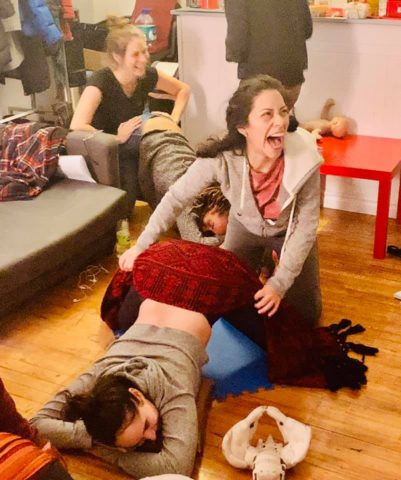
Improving the Consequential Validity of the MotherWit Doula Training
I believe that there needs to be a more developed instructional and evaluation component on the legal and business side of being a doula. I believe that there should be a more formal understanding of what midwives, doctors, nurses and doulas are allowed and not allowed to do. A doula could get into hot water by stepping on another’s toes. A doula also should know their rights and those of their client. I would bring in the charters of The Quebec Nurse’s Association, The Collège des Médicins, L’ordre des sâges-femmes du Québec as well as The Charter of Rights during Birth. I would have a lawyer specialized in medical and specifically obstetric law help to develop a unit and method of evaluating understanding that would include developing a select-response .
More evaluation and instruction in the understanding of what and how one can advocate for clients that could be led by Regroupement Naissance-Renaissance should be integral as their work is empowering to those that bear witness to obstetric violence which is recently being recognized as being widespread. This is a way to address the underpinnings of white privilege, patriarchy and to give doulas tools and resources to help impact the system and be instruments of change through advocacy, bearing witness and feeling safe enough to speak out. There is often a sense of injustice teamed with powerlessness and that a doula becomes a buffer between clients and the medical system, but I believe that with proper training from birth advocates doulas could really affect positive change. This is a way to be a proper ally to the vulnerable and usher in a spot for those tied to vulnerable communities to advocate as there is a bit of a malaise from white privileged women as they are first socialized to be liked and are deeply afraid of losing their status and privilege. An emphasis on advocacy could be an equalizer without it being about white women trying to fix other people’s problems or having token minority clients. The reality is that the people who cannot afford a doula are those that need them the most. A subsidization of doula wages for incarcerated, marginalized and vulnerable women could provide paid training but also bring more seasoned doulas back to the cases that were pro-bono and burnt them out in many ways. Shadowing could take place with the most vulnerable clients referred by the Maison Bleu or the CLSC as doulas could support one another.
Although, doula training has no intention of pretending to be medical school, I think it could be beneficial to learn some of what doctors learn so that they understand where they are coming from even if their approach, beliefs and purpose for being supportive to the birth-giver is totally different. I would put in a concrete supplemental childbirth course from a medical point of view. If doulas can learn in that way about breastfeeding, they can also learn the medical perspective on childbirth without it being just from a divergent stance. There has to be some common ground established with medical staff and this can be a way. When I did the doula training my ex boyfriend was a family practitioner and he couldn’t believe I could attend births after a four day training. He was even more shocked when I told him I didn’t need training at all. We dialogued about many things and how our respective schools of thought viewed different aspects of birth and this was very valuable to me. That said, a mother, friend, sister, partner doesn’t need any experience to attend a birth and a doula gains experience quickly through attending births, training and her doula community. As another point, many doctors that attend births never have nor will give birth- namely men and so their place in supervising a birth and women’s bodies could easily come under question.
I would remove paying a doula to shadow. I would also make it essential for at least two births so that a doula in-training can at least see what at least two different seasoned doulas do. This makes it around learning and not money. The student should report on their experiences but the seasoned doula should also give feedback to the student and their instructor. This is invaluable. During COVID this was all changed radically. Students can not shadow doulas because of limits on birth support people. In fact, many doulas are having to doula virtually. For new doulas, this is too daunting. Shadowing needs to be done virtually but for privacy and security reasons, using online video and audio equipment for births with a third-party involved is dicey.
Recently, doulas certifying did their breastfeeding support class virtually, which is how it was already offered as MotherWit Students can be found across North America. They also attended virtual breastfeeding support groups, could not connect in person with people from their resource list and they were given three years instead of one to attend a birth. The core training of four days has been moved online. I was in the last group to do in-person training. This opens up a whole other set of questions. I believe the affective learning can not be as complete virtually, nor the bonding nor the practice with massage or rebozo.
I would also have all four families, if they are able, fill-out an evaluation of the doula so they can get a more complete picture as each birth is so different from one to the next. I would also get a medical staff person that was willing to fill-out an evaluation that the doula felt they had had sufficient contact with.
A portfolio or even a website could be a way to present all of the different aspects of one’s doula learning, experience and philosophy. In a sense, each doula that certifies is doing this in an informal way. Some doulas created a website before even having finished the certification. That said, some are not great with technology, and learning how to invoice, look at a model of a contract, how to incorporate or create a sole proprietorship or corporation, how to use google docs or another cloud where a doula has access to their intake information about a client and can easily share it with a backup doula are daunting, using a platform to doula at a distance in the time of COVID are very daunting, but doing these things for a portfolio could afford great skills!
Bibliography
Photo credit: Lesley Everest, MotherWit Doula Care
Corrigan, J. (2020). Consequences of Evaluation Use and Interpretation. https://moodle.concordia.ca/moodle/mod/page/view.php?id=2429514&forceview=1
Gareis, C. R., & Grant, L. W. (2015). Teacher-made assessments: How to connect curriculum, instruction, and student learning (2nd ed.). Routledge.
Everest, L. (2020) MotherWit Core Training Handbook. Montreal.
Everest, L. (2020/10). Personal Communication Email.
Mueller, J. Authentic Assessment Toolbox. http://jfmueller.faculty.noctrl.edu/toolbox/whatisit.htm#
Sample Evaluation Question
In Teacher-made assessments: How to connect curriculum, instruction, and student learning (Gareis & Grant, 2015 p.70) they suggest that the best way to evaluate a student’s oral language skills is to have them give an oral presentation. They say this is more authentic than recalling answers about public speaking, but go on to say. “However, what the teacher will gain in authenticity, will be lost in efficiency.”
On Jon Mueller’s website Authentic Assessment Toolbox http://jfmueller.faculty.noctrl.edu/toolbox/whatisit.htm he creates a dichotomy where traditional and authentic forms of evaluation are juxtaposed. An example would be, “Contrived vs. real life” or “Selecting a response vs. performing a task.”
Could we then say that traditional methods are more efficient than authentic methods? What is more efficient about using traditional methods? What lets us get a better picture of learning or knowledge: an authentic or traditional evaluation? What is authenticity in evaluation? Please discuss these questions and your interpretation of traditional and authentic evaluation as well as what constitutes efficiency in evaluation and efficiency of what? You have a 750 word limit.
CATEGORIES
Archives
- February 2022 (1)
- October 2020 (2)
- September 2020 (1)
- January 2016 (1)
- January 2015 (1)
- October 2014 (1)
- February 2014 (1)
- January 2014 (1)
- July 2013 (1)
- June 2013 (2)
- May 2013 (1)
- March 2013 (1)
- February 2013 (2)
- November 2012 (1)
- September 2012 (1)
- June 2012 (2)
- May 2012 (1)
- April 2012 (1)
- March 2012 (1)
- February 2012 (1)
- January 2012 (2)
- December 2011 (1)
- November 2011 (4)
- October 2011 (4)
Popular Tags
'Round Table Tours Asian breakfast business prolfiles cabbage canning Community Europe Events farms fermentation Fitz & Follwell Food & Story Food history Food Production food tours fresh juices Friends gastronomy health herbs History Italy kimchi Meal exchange Nuart organic preserves public Quebec restaurant Rumble & Shakes Réseau d`Entraide de Verdun salt smoothies spicy Tours de la Table Vegan youtube videos

